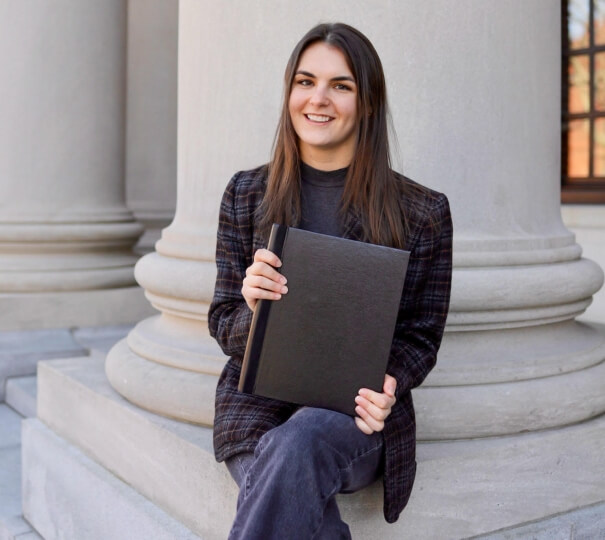For a senior capstone project, Sydney Mason built a holographic display operating on the microscopic level.
Engineering Design Projects (ES 100), the capstone course at the Harvard John A. Paulson School of Engineering and Applied Sciences (SEAS), challenges seniors to engineer a creative solution to a real-world problem.
Metasurface Microscale Holographic Display
Sydney Mason, S.B. ‘23, Electrical Engineering
Advisor: Federico Capasso
Please give a brief summary of your project.
I built a holographic display that confines the light within an extremely small area known as a microcavity, then manipulates it using material structured at the nanoscale level.
Is there a real-world challenge that this project addresses?
Cavities are useful for application in communications and computing, but they are unable to be miniaturized and accommodate complex light beam shapes. Additionally, my project addresses challenges in quantum optics research.
How did you come up with this idea for your final project?
The idea for this project was developed in conjunction with Dr. Federico Capasso and Dr. Marcus Ossiander, my two advisors in the Capasso Lab here at Harvard. We identified constraints in current cavity design and the potential to optimize them and create novel functionality.
What was the timeline of your project?
I spent the first two months conducting a literature review and computationally designing and modelling the device. The next two months, I spent building the experimental setup in the optics lab and fabricating the device. Next, I conducted the experimental characterization of the device and measured and validated all of the previously set performance metrics. In my final month, I worked on analyzing my results.
What part of the project proved the most challenging?
The experimental measurements definitely proved to be the most challenging. My setup involved the alignment of microscale elements and the proper alignment was crucial to the performance of the device. This proved to be quite difficult and took a long time to find the optimal setup conditions.
What part of the project did you enjoy the most?
I remember fondly the moment at which my device first worked. I was testing in the lab and suddenly the optimizations I made on the setup proved to be successful and I could view the intracavity hologram (an image of a skier) on the camera outside the cavity. After a lot of hard work and hours spent in a dark optics lab, this was very exciting!
What did you learn, or skills did you gain, through this project?
My experience with this independent research project was crucial to my development as a researcher and engineer. I feel much better prepared to commence my graduate studies next year after having done this project. I have learned about the nano-fabrication process for photonics devices, learned how to conduct simulations for designing photonics, gained an aptitude for experimental design and learned how to contextualize research with broader goals.
Press Contact
Matt Goisman | mgoisman@g.harvard.edu
